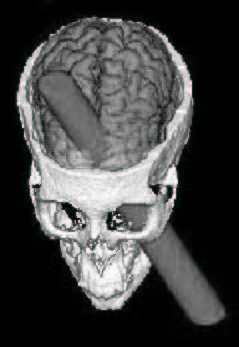
What the hell did REALLY happen with Phineas Gage?
Against a background of phrenology and Brocas’s writings on aphemia (1861) there was considerable resistance to Dr Harlow’s hypothesis. It was 10 years before David Ferrier came to the rescue in the Goulstonian lectures of 1878. On the basis of experimental physiology he concluded, “There are certain regions in the cortex to which definite functions can be assigned; and that the phenomena of cortical lesions will vary according to their seat and also according to their character.”3 On removing prefontal lobes in monkeys he had found that “removal or destruction by the cautery of the antero-frontal lobes is not followed by any definite physiological results.... And yet, notwithstanding this apparent absence of physiological symptoms, I could perceive a very decided alteration in the animal’s character and behaviour, while it is difficult to state in precise terms the nature of the change.” He noted that “while not actually deprived of intelligence, they had lost, to all appearance, the faculty of the attentive and intelligence observation.”3 Tracing the trajectory of the tamping iron through Gage’s brain he concluded that its track included the prefrontal region, “and that, therefore, the absence of paralysis in this case is quite in harmony with the results of experimental physiology.”3 Gage had through a tragic natural experiment caused Dr Harlow to observe what Ferrier’s animal studies later showed—that injury to the prefrontal cortex of the frontal lobes of the brain can cause profound personality changes, without other apparent neurological deficits.
He would know that the cardinal function of the prefrontal cortex is the temporal organisation of behaviour supported by the subordinate functions of short term memory, motor attention, and inhibitory control.
Kieran O’Driscoll, Consultant neuropsychiatristJohn Paul Leach, Specialist registrar in neurology
"the cardinal function of the prefrontal cortex is the temporal organisation of behaviour supported by the subordinate functions of short term memory, motor attention, and inhibitory control."- Fuster JM. The prefrontal cortex: anatomy, physiology, and neuropsychology of the frontal lobe. 3rd ed. New York: Lippincott-Raven; 1997.
But how did they come to this conclusion? and why should I believe it? The organisation of behavior, what is that supposed to mean?
-> Research with the PET(Positron Emission Tomography)scan and MRI(Magnetic Resonance imaging) supports the view that the prefrontal cortex is where we process much of the information involved in making plans and solving problems (Kroger et al., 2002; Rowe et al., 2001)
*The tamping road was shot through part of the prefrontal cortex of Phineas Gage.

No hay comentarios:
Publicar un comentario